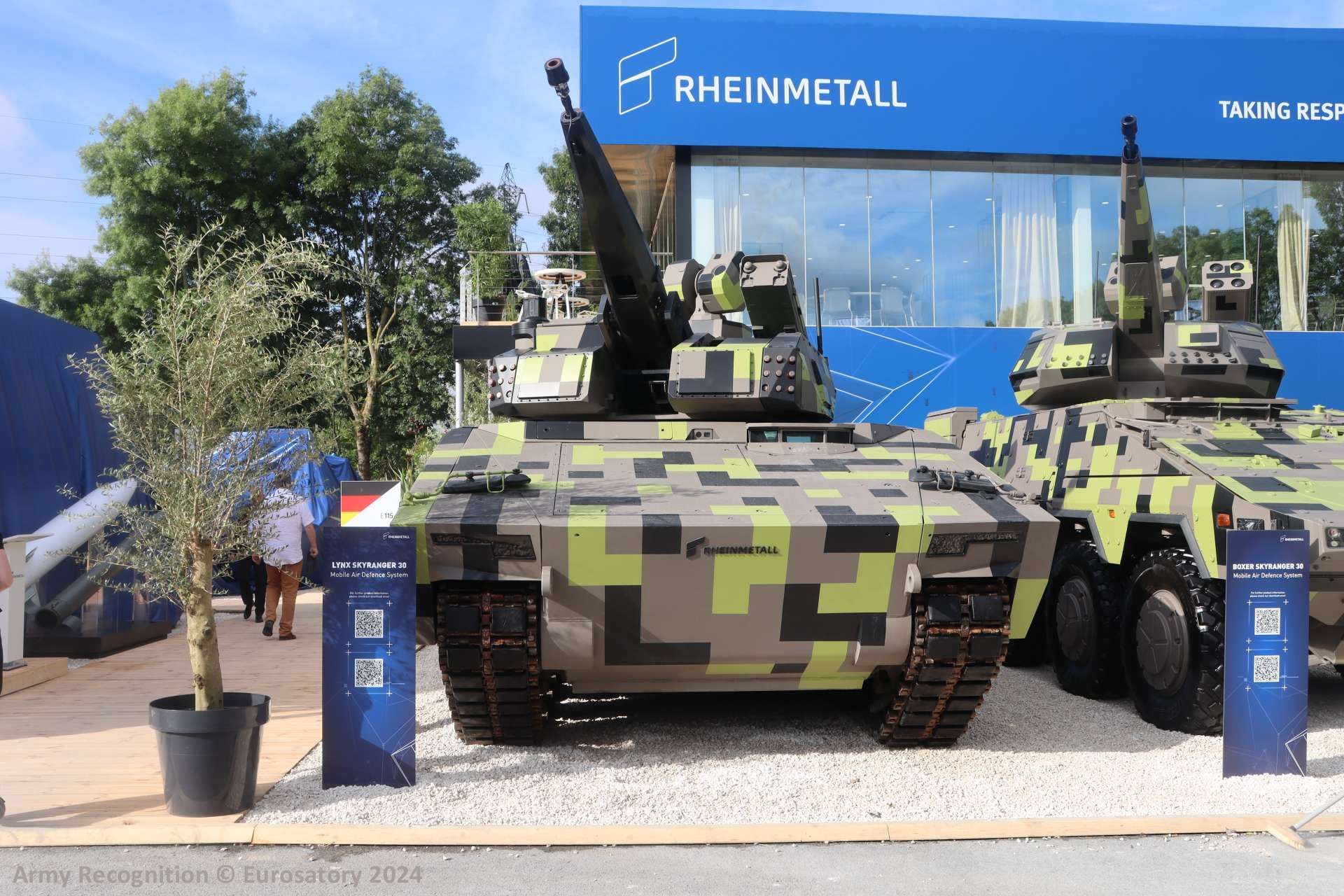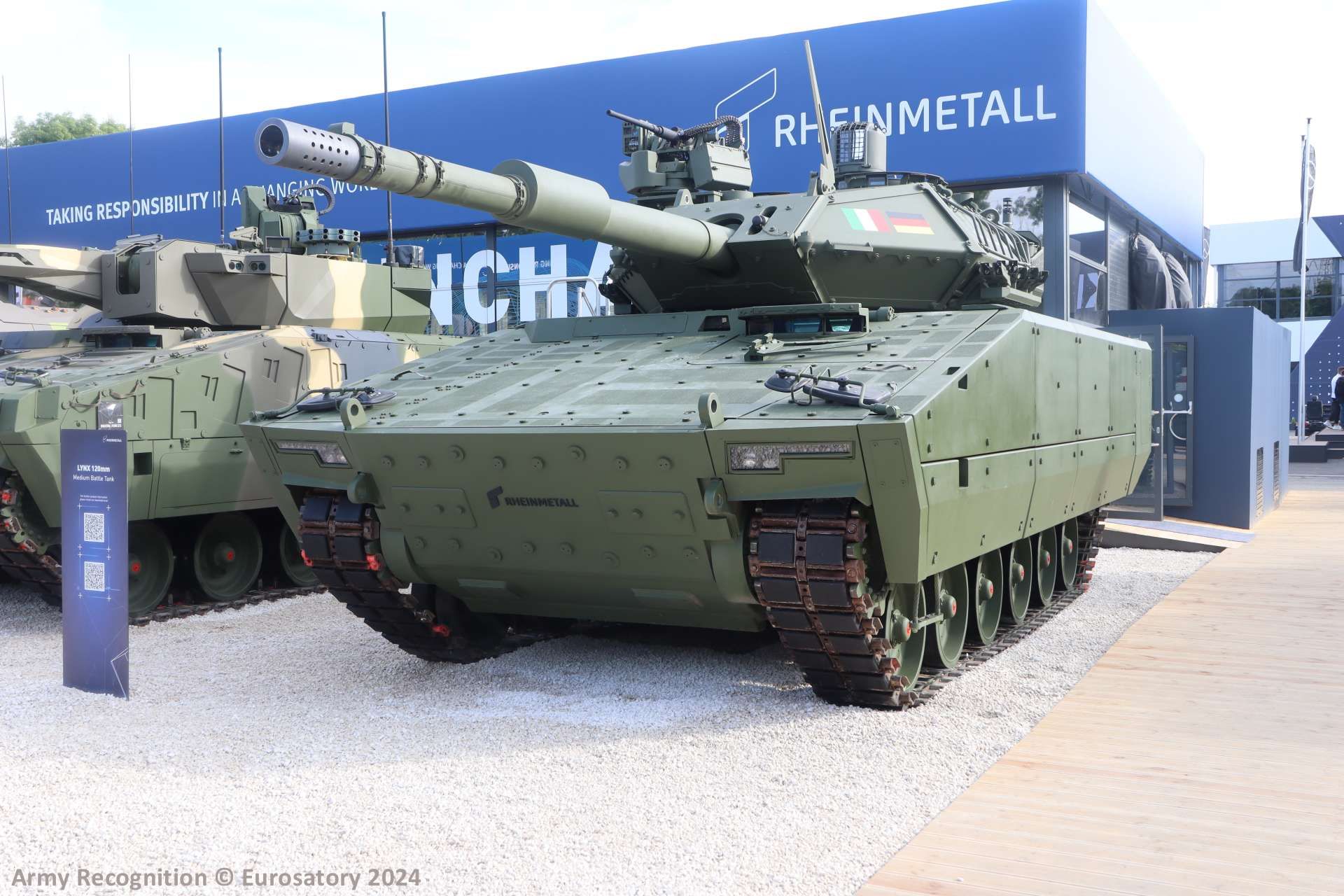Breaking News
Ukraine to receive first KF41 Lynx IFV from Germany by December 2024.
On August 8, 2024, Rheinmetall announced that the first KF41 Lynx infantry fighting vehicle (IFV) would be delivered to Ukraine by the end of the year. The German company plans to provide several hundred Lynx vehicles to Ukraine, which will include training, maintenance, and repair services. This development marks a significant step in the industrial expansion and defense collaboration between Germany and Ukraine.
Follow Army Recognition on Google News at this link

The Lynx features a family of vehicles built around a common drive module with flexible mission modules in various configurations, allowing customization for roles such as infantry fighting, air defense, command, or medical vehicles. (Picture source: Rheinmetall)
In December 2023, Armin Papperger, CEO of Rheinmetall, stated to Bild newspaper that production for the Fuchs 6x6 armored vehicles and KF41 Lynx IFVs in Ukraine would begin in 2024. This announcement follows a statement Papperger made on July 10, 2023, during a CNN interview, where he revealed plans to build a production facility in Ukraine. This facility aims to help Ukraine achieve military independence by providing NATO technology and production capabilities, reducing reliance on external aid from the United States and the European Union.
Papperger highlighted improvements in military procurement procedures that have allowed Rheinmetall to secure major contracts with the German government. In 2023, the company signed contracts and framework agreements worth over 10 billion euros to equip both the Bundeswehr and Ukraine. These orders could potentially increase to 15 billion euros in 2024. He also noted an increase in the speed of production and delivery, with projects that previously took a decade now being completed in a few months. A new ammunition factory exemplifies this increased efficiency, aiming to ensure supply security.
The expected contract between Rheinmetall and Ukraine, anticipated to be finalized in 2024, represents a significant expansion of Rheinmetall's role in enhancing Ukraine's defense capabilities. Papperger mentioned that after the contract is signed, the first Fuchs vehicle should be ready in Ukraine within six to seven months, and the first KF41 Lynx within twelve to thirteen months. Production in Ukraine is projected to start by the end of summer 2024 for the Fuchs, and possibly by summer 2025 for the Lynx, competing with the Puma series.

Papperger mentioned that after the contract is signed, the first Fuchs vehicle should be ready in Ukraine within six to seven months, and the first KF41 Lynx within twelve to thirteen months. (Picture source: Army Recognition)
Rheinmetall has already begun manufacturing the first ten Lynx vehicles in Germany and Hungary, in collaboration with Ukraine. Papperger noted the potential for increased production rates in Ukraine after an initial ramp-up phase. The German federal government has indicated its readiness to grant the necessary export licenses, facilitating this project.
The collaboration between Rheinmetall and Ukraine has progressed rapidly due to their strong partnership. Rheinmetall is the largest defense industry partner for Ukraine, with orders amounting to approximately 900 million euros in 2022 and increasing to around 2.5 billion euros in 2023. Papperger expects even higher order volumes in the coming year.
Rheinmetall's involvement in Ukraine extends beyond vehicle production. The company is engaged in the maintenance of armored vehicles in Ukraine and has been training Ukrainian workers in Germany. The start of Lynx series production in Hungary further indicates Rheinmetall's expanding presence in the region.

The modular design of the Lynx vehicle aims to reduce lifecycle costs and enable adaptation to changing battlefield conditions, such as strengthening air defense when equipped with the Skyranger 30 system. (Picture source: Army Recognition)
The Lynx armored fighting vehicle is designed to meet modern military operation requirements. It features a family of vehicles built around a common drive module with flexible mission modules in various configurations, allowing customization for roles such as infantry fighting, air defense, command, or medical vehicles. This modular design aims to reduce lifecycle costs and enable adaptation to changing battlefield conditions.
Equipped with Spike LR2 anti-tank guided missiles, advanced fire control, optical guidance systems, and night vision capabilities, the Lynx's armor is highly regarded. For instance, the Hungarian army will receive seven variants of the Lynx KF41, including command post vehicles, reconnaissance vehicles, forward artillery observer vehicles, mortar tracks, field ambulances, and driver education vehicles. The vehicle can accommodate three crew members and up to eight soldiers, supporting various combat operations. Its modular architecture allows for additional mission equipment or new variants within the vehicle family.
Powered by an 850 kW Liebherr engine and Renk transmission, the Lynx KF41 is capable of navigating difficult terrains at speeds up to 70 km/h and covering distances over 500 km on 900 liters of diesel. Its Supashock-developed suspension system supports various mission kits and survivability packages. The vehicle is equipped with a LANCE 2.0 turret with a 35mm Wotan cannon for targeting. It provides protection against ballistic and mine threats with modular survivability systems that can be upgraded or replaced in the field. Active defense systems such as the ROSY smoke protection and Rheinmetall's Acoustic Shooter Localization System (ASLS) enhance its defensive capabilities.
The Lynx KF41's digital backbone and open architecture support the integration of new mission systems, maintaining adaptability to emerging technologies and battlefield challenges. Its sensor suite, including the stabilized Electro Optical Sight System (SEOSS) and laser warning sensors, aims to provide battlefield awareness and automatic target recognition for quick threat responses. Capable of autonomous operation in degraded environments, the vehicle can synchronize with other units across various domains, making it a valuable asset in modern multi-domain battle scenarios. By combining protection, mobility, and firepower with a modular platform, the Lynx KF41 is designed to meet the demands of current and future combat environments.

Powered by an 850 kW Liebherr engine and Renk transmission, all variants of the Lynx are capable of navigating difficult terrains at speeds up to 70 km/h and covering distances over 500 km. (Picture source: Army Recognition)


























